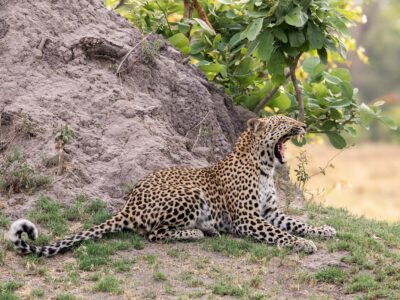When and where can the Wildebeest Migration be witnessed?
The blue wildebeest in East Africa is among the big game species in Africa. The black wildebeests are merely nomadic. Some of the wildebeest populations perform an annual migration to new grazing grounds. The wildebeests often graze in mixed herds along with zebras which allow them better awareness over predators.
The wildebeest migration takes place every year as about one and a half million wildebeest, zebras and other antelopes make circular tours between the Maasai Mara in Kenya and the Serengeti in Tanzania to graze on greener pastures. The migration is noted as one of the natural wonders and offers people the opportunity to witness Nature. The game unfolds as the predators who lurk in the bushes pounce on their prey and they scamper to safety.
What are the predators that make their play during Wildebeest Migration?
The most notorious ones are the Nile crocodile and the lions. The grassy Mara plains is the perfect hunting spot for the lions. The thick grass offers the perfect camouflage to the lions, who attack from a strategic hiding spot. The hyenas screech in the shadows and the vultures sway during the peak of the migration. It is feast for all!
The Nile crocodile is probably the deadliest predator! The climax of the Mara migration – the crossing of the Mara river, brings it about! The crocodiles kills its preys by drowning them. It brings the preys below the water surface, shredding the prey and suffocating them.
The beginning of the migration
The journey begins somewhere between january and March in the Ngorongoro Conservation area and the Serengeti during the calving season. Huge herds of zebras and wildebeest graze on the rain-ripened grass. The herds are forced towards the woodlands and long grass plains of western corridor of Serengeti lining the Lake Victoria.
The wildebeests start moving north towards the Maasai Mara during the transitional period of April to July. They head to the next watering point, the Mara River. Numerous predators such as the leopards, lions and cheetahs use this as their opportunity.
The spectacular wildebeest movements
The grazing animals move towards the Mara River for about four months for drinking water and greener grasses. The enormous herds of wildebeest move to the lush and green grasslands in the Maasai Mara by crossing the river. Crossing the swollen Mara River offers one of the most spectacular natural sights.
A shallow place is generally chosen depending on the amount of rainfall to allow most of the herd to cross safely. But the most of the river is deep and flow fast and the banks on both sides are quite steep. Many weak animals get swept away or get trampled by the stampede of the other wildebeest. Lots of animals die during the crossing. The predators who are at the heels are in for a wonderful treat!
The migration ceases
The short rains cause the southward march to the Serengeti. As many as 250,000 wildebeest fall during the 1,800 mile journey every year. The deaths can be accounted by exhaustion, sickness and predator attacks. About 500,000 new calves who emerge in the next calving season keep Kenya’s natural wonder alive.
The clockwise migration of the wildebeest, antelopes and zebras around the Serengeti-Mara ecosystem is one of the most spectacular natural events in the world.






